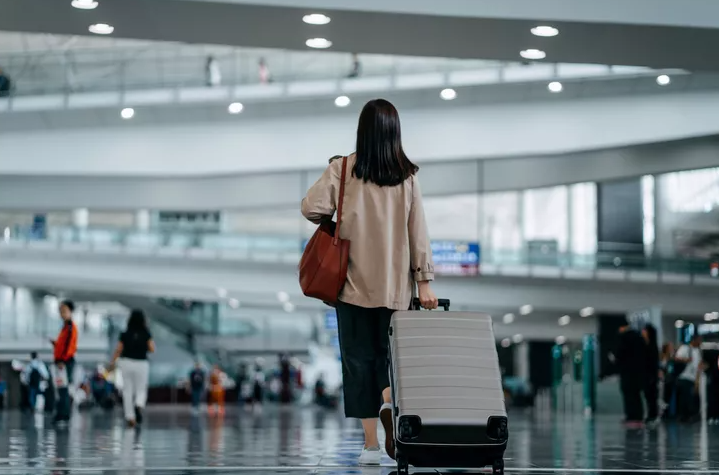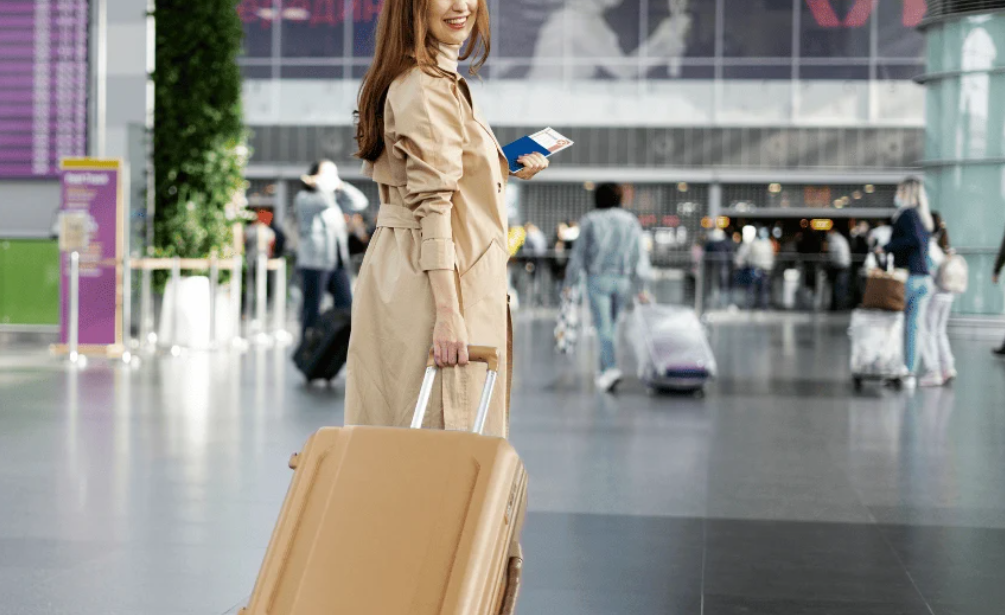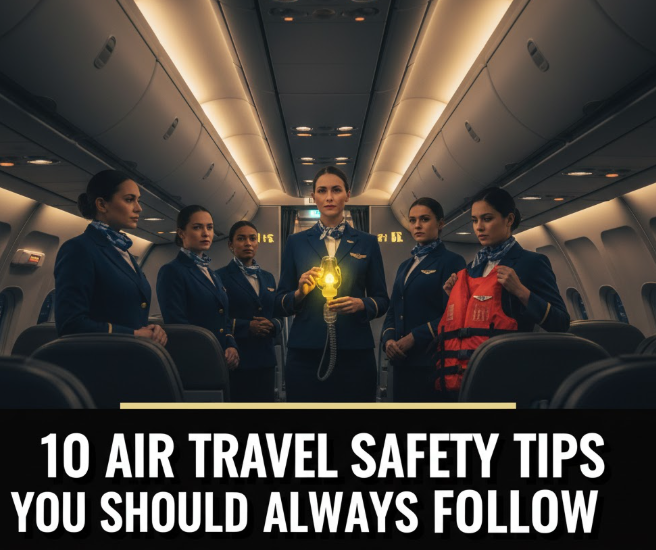Here’s the thing: Flying is a hassle. Lines, terminals that make no sense, delays for reasons you could never have anticipated — airports are not always the most tranquil places. But what if you could whiz through security, score great deals and actually enjoy your time before setting sail? The good news is that people who spend a lot of time in the air, as well as airport workers, have figured out some clever work-arounds to turn your passage from hellish to heavenly.
These insider tips aren’t lurking in some secret travel club, either. These are practical tips that anybody can rely upon, whether you’re a nervous first-time flyer or someone who spends half of your life racking up air miles. From when to arrive to knowing which airport apps can help — and the under-the-radar ones that will get you into an airline’s lounge if you’ve got a long layover (and even if you don’t) — these suggestions will save time, money and aggravation. So here we go: The secrets that will change the way you see airport travel forever.
Secret #1: The Tuesday-Wednesday Sweet Spot That Will Change Everything
For most of us divine mortals, we book flights without pondering what day of the week to fly. That’s a mistake. If you’re looking for cheaper, less-crowded flights, Tuesday, Wednesday and Saturday are good days to fly. Why? Business travelers fly Monday through Friday, jamming up those routes. Families frequently come on weekends, so Fridays and Sundays are crowded.
Flying in the middle of the week, you’ll see shorter security lines, empty gate areas and staffers with a more laissez-faire attitude. There is also usually less congestion in the air on these days because of fewer flights in general, so airlines also experience less delay. If you can be flexible in when you travel, the difference of a day can mean huge savings.
Pro tip: The very best time to fly is Wednesday afternoon. Most people are at work, kids are in school and you’ll pretty much have the airport to yourself.
For more travel tips and flight deals, visit Call to Flights.
Secret #2: Check-In 24 Hours in Advance – to the Exact Minute
Airlines will post seat assignments and boarding position 24 hours prior to departure. If you set an alarm to check in at the very moment flying becomes possible, you get first dibs on available seats. This is more important than you may realize.
Early check-in means:
- Seat assignments, including those in the emergency exit rows with extra legroom
- Low boarding group numbers, thus, overhead bin space
- Upgrades if the flight is oversold
Most airlines now feature automatic check-in for a small fee; however, the above method is free and yields the same result. Set a phone alarm for 24 hours before your flight. Those 30 seconds will level up your flying experience.

Secret #3: The Security Secret – How to Get Into a Shorter Line
For the vast majority of air travelers, security lines are the most hated part of flying. But airports have secrets that can save you hours in wait time. First, download your airport’s app. Many now display current security wait times for various checkpoints. Bigger airports often have several security zones, and some are always faster than others.
Here’s what most travelers miss: The checkpoint farthest from ticketing is often the one with the fewest people in line. Naturally, people go to the first security line they encounter. Walk three more minutes to the end of the terminal and you might save 20 minutes in line.
Strategic Security Line Plan
| Strategy | Time Saved | Challenge Level |
|---|---|---|
| Farther Checkpoint | 15–20 min | Easy |
| Early Morning (before 6 AM) | 10–15 min | Moderate |
| TSA PreCheck | 20–30 min | Effortless |
| Tuesday/Wednesday Fly | 10–15 min | Easy |
Another trick: Families with little kids or big groups naturally slow down lines. If you see them down the line, pivot to another line even though it will appear marginally longer. Individual travelers move much faster.
Learn more about TSA PreCheck and security screening to make your travel smoother.
Secret #4: The Airport Arrival Formula That Really Matters
“Two hours early for a domestic flight, three for international.” You have heard this a million times. But that isn’t always the case, and giving in blindly wastes your time.
The actual formula depends on a few things:
Your airport size: Smaller regional airports require 60-75 minutes. Mega-hubs like Atlanta or LAX would require the full two hours, or longer.
Time of day: If your flight is at 6AM, then plan to be there at 4AM when you can breeze through security. You can shave 30 minutes from the usual advice.
TSA PreCheck status: Reduce arrival time by 30-45 minutes.
Checked bags: Add 15 minutes if you’re checking luggage.
At mid-size airports, 90 minutes is the sweet spot for most domestic flights. You won’t necessarily clear security with time to waste, but also not be sitting at the gate for an hour. Track your personal timing through a couple of trips, and you’ll see that the perfect window for arrival will emerge.
Secret #5: You Can View Gate Changes and Delays Online First
Here’s something the airlines won’t tell you: Gate assignments and delays appear in their apps and websites 15 to 30 minutes before appearing on airport monitors. Flight attendants and gate agents receive notifications right away through their systems, but they aren’t scrambling to announce them.
Once you clear security, check your airline app every 20 minutes. If your gate changes and you don’t notice, you may find yourself sprinting full speed across the terminal as everyone else leisurely strolls to the new location.
Better still, opt in for push notifications on your flights. Your phone will ping you the moment anything changes. This behind-the-scenes knowledge has rescued innumerable travelers from missed flights and panicked last-ditch efforts.
Secret #6: The Airport Food Price Trap (And How to Get Around It)
You pay a lot more for food in an airport because you’re a captive audience. But savvy travelers understand the loopholes. First, bring an empty water bottle with you through security. There are water fountains or bottle-filling stations in every airport. That’s $5 in savings for each flight right up front.
Skip the sit-down restaurants near your gate for food. They charge premium because they know you’re not walking out. Rather, walk to the airport’s main terminal or food court. Prices tend to fall 20-40% just two gates down from your departure gate.
The actual insider play: Now at many airports, delivery apps offer a “post-security pickup” feature. Restaurants outside the airport will send you food through security. The markup is under that of airport prices, and the quality is superior.
Some travelers pack snacks from home (though please remember: solid foods are OK, but no liquids or gels above 3.4 ounces), while others buy them at the airport. Sandwiches, fruits, nuts and protein bars all do the trick.
Secret #7: Outlets and WiFi Aren’t Where You Think
Everyone crowds around the power outlets by gates that are immediately visible. But airports have secret charging stations that are virtually never occupied. Look for:
- Partitions between gates (not at gate)
- Under or behind a strip of seats
- Near closed airline check-in counters
- In hallways leading to restrooms
- At deserted gates of flights that left hours before
For WiFi, the airport free network is usually slow and overcrowded. Here’s the workaround: Many airport lounges emanate stronger WiFi signals that extend just beyond their door. If you’re standing near an entrance to a lounge, you might be able to access their speedier network without full access.
One-time lounge passes ($30-$50) are purchased by some frequent travelers for long layovers. The free food, drinks, comfortable seating with outlets and dependable WiFi make it worth the price compared with purchasing overpriced airport meals.
Secret #8: The Unexplained Boarding Group Game
Most airlines board in groups, though the system is more flexible than it seems. Here’s what they don’t say: If your group is 5 and they call 3, often you can board too. Gate agents are watching overhead bin space, but not necessarily enforcing rules once boarding has begun.
It’s a matter of confidence and timing. Hang back and wait for the line to diminish after your group is called, then gently insert yourself. Don’t push forward when it’s crowded, but if there’s a space, take it. Gate agents hardly ever check boarding groups once the process is underway.
Why does this matter? The earlier boarding means first come, best choice of overhead bin space and time to get comfortable without everyone rushing past. If your connection is tight, you will also be the first off the plane.
Key exception: Basic economy tickets typically board last, no exceptions. Before you attempt this strategy, know your type of ticket.
Making It All Work Together
The best way to use these secrets is to use them together. Book a Tuesday afternoon flight, check in exactly 24 hours before departure, show up at the airport 90 minutes before — and use your phone to find which TSA line is shortest. Bring your own water bottle, uncover secret power outlets and board strategically.
Every trick shaves a bit of time and hassle. Together, they change your airport experience from something you suffer through into something over which you exercise agency. The best part? None of these tactics cost any extra money or involve any special status. They simply require knowing what seasoned travelers have learned from experience.
Your Stress-Free Travel Starts Now
Airports need not be overwhelming. The line between a harried trip and a relaxed one is often drawn by tiny bits of information that frequent travelers may take for granted. Now, you enjoy those same benefits.
Try one or two secrets on your next flight. Consider checking in exactly 24 hours early and use your airport’s app to locate the best security checkpoint. Once you realize how much easier things can be, your repertoire of tactics will naturally expand.
Flying is already costly and exhausting. Don’t make it more difficult for yourself by ignoring the easy tips and tricks that could save you hours of frustration. Your future self serenely standing at the gate while everyone else is running around frantically will thank you.
Visit Call to Flights for more helpful travel guides and the best flight deals.

Frequently Asked Questions
How early do I actually need to be at the airport?
For domestic flights at medium-size airports, 90 minutes ought to be sufficient provided you’re not checking bags. Large hub airports require closer to 2 hours. International flights require 2.5-3 hours. These times are 30 minutes shorter if you have TSA PreCheck. Check your individual airport’s updates in the busiest travel season.
Is TSA PreCheck really worth the investment?
Yes, particularly if you travel by plane more than twice a year. TSA PreCheck is valid for five years and costs $78 (about $15 a year). You’ll save 15-20 minutes at security lines, keep your shoes and belt on, leave laptops in your bag. The time saved and peace of mind are worth it.
Can I take food through airport security?
Absolutely. You can bring solid foods like sandwiches, fruits, snacks and baked goods through TSA checkpoints. As for liquids and spreads, they have to be 3.4 ounce containers or smaller that all fit in one quart-sized bag. This is one of the simplest airport money saving tips.
What if I don’t make it to my boarding group number?
Airlines board in groups with earlier positions boarding first. But if you have a basic economy ticket, or line up to board too early when the lines are long, gate agents may tell you to wait. The best bet is to wait until your group is called and the initial rush has subsided.
How can I know that my flight is delayed before the airport makes it official?
Download your airline’s app and turn on push notifications for your flight. Airline updates are made 15-30 minutes before monitors in the airport display changes. Flights can also be tracked in real time through the FAA website, or on flight tracking apps like FlightAware.
Are airport apps really necessary?
You don’t need them — but when you do travel, they will save a lot of hassle. Airport apps display security wait times, terminal maps, gate details and restaurants in the area. Airline apps take over check-in, boarding pass and flight update duties. With both, you’ll save yourself 30+ minutes of helplessly wandering.
How can you steer clear of costly airport food?
Bring snacks with you and take an empty water bottle through security. If you want a meal, move away from your gate to the main terminal, where prices tend to be more reasonable. At some airports, you can even have food delivered with apps; a person delivers your order through security for less than the cost in the airport restaurant.






